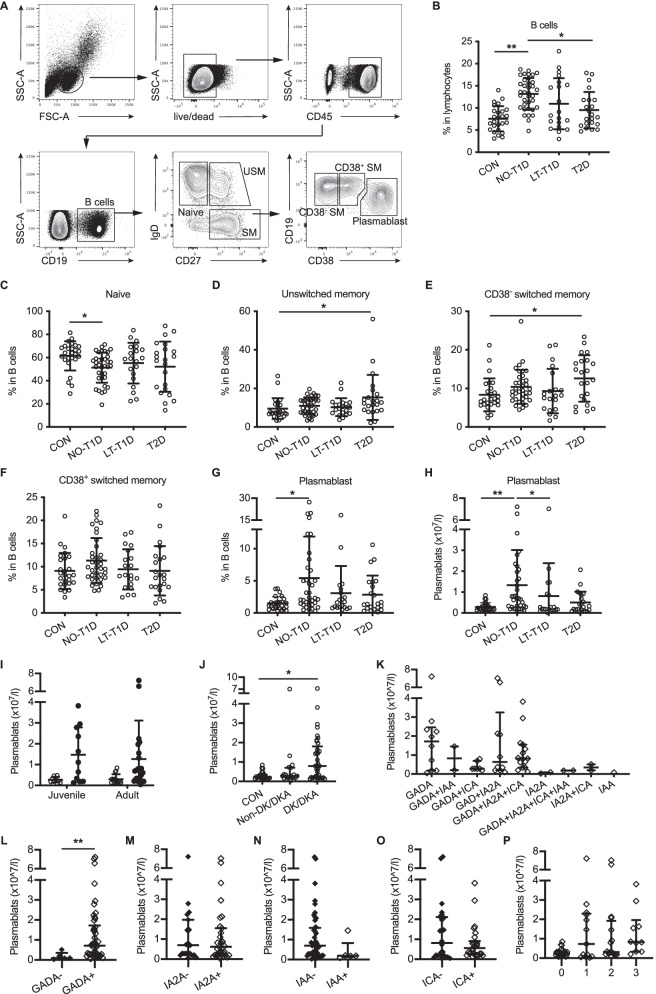Fig. 1.
Circulating plasmablast frequency is increased in patients with new-onset T1D. A Flow cytometry analysis of circulating B cell subsets. B The frequency of B cells in control subjects (n = 26), NO-T1D patients (n = 36), LT-T1D patients (n = 20), and T2D patients (n = 22). C–G Frequencies of naïve B cells, unswitched memory B cells, CD38− switched memory B cells, CD38+ switched memory B cells, and plasmablasts. One-way ANOVA followed by Bonferroni’s multiple comparisons test or Kruskal–Wallis test followed by Dunn’s multiple comparisons for plasmablast analysis and One-way ANOVA followed by Bonferroni’s multiple comparisons test for other subsets. H The absolute number of plasmablasts. * P < 0.05, ** P < 0.01. I Numbers of plasmablasts between patients with NO-T1D (filled-in circles) and controls (open circles) in juveniles (CON n = 10, T1D n = 11) and adults (CON n = 15, T1D n = 24). J Numbers of plasmablasts in the control subjects, NO-T1D patients with ketosis or ketoacidosis at onset, and NO-T1D patients without ketosis or ketoacidosis at onset. K–O Numbers of plasmablasts in patients seroconverting to different types of autoantibodies. P Numbers of plasmablasts in patients with different numbers of autoantibodies. Independent t test or Mann–Whitney U test. * P < 0.05, ** P < 0.01. Error bars indicate SD. CON, controls; NO-T1D, new-onset T1D; LT-T1D, long-term T1D

